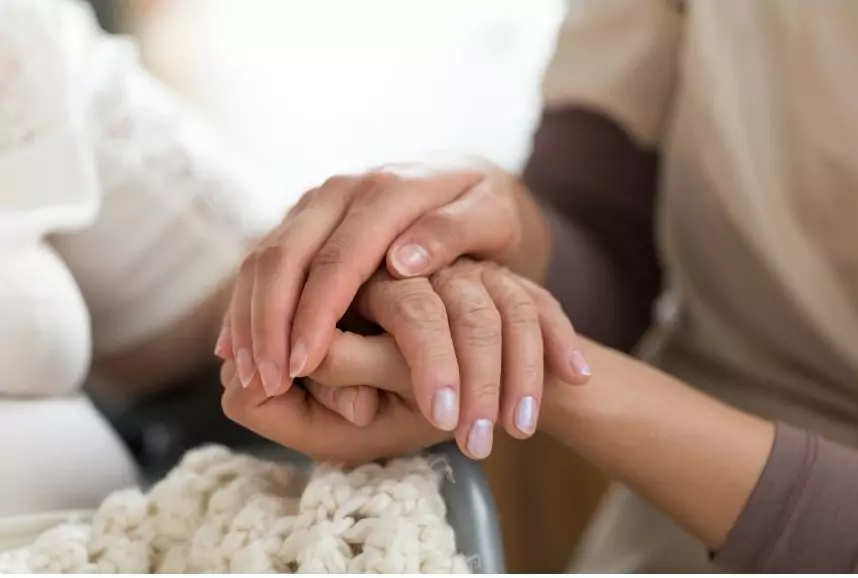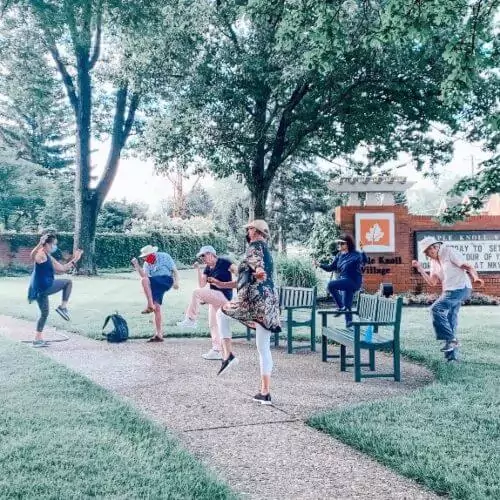As more than 10,000 baby boomers turn 65 each day, more caregiving services are being provided by people who aren’t healthcare professionals. According to the National Alliance for Caregiving and AARP Public Policy institute, an estimated 43.5 million American adults are unpaid caregivers, and 85% were caregivers for someone related to them, and half of these caregivers provided care for a parent. While caregiving can have many rewards, it can also be emotionally, mentally, and physically demanding. Caregiver burnout can occur when the stress of caregiving goes unaddressed, which can have negative long-term effects on one’s health. While there are many happy and fulfilled caregivers, burnout is very common. In fact, the National Alliance for Caregiving reported that 40% of caregivers feel emotionally stressed and 20% of caregivers experience physical pain and discomfort. Caregiver burnout can look different on each individual; however, there are some common symptoms that can serve as warning signs.
Symptoms of Caregiver Stress and Burnout
Caregivers are often stressed for time and many put the needs of their loved ones above their own. Many caregivers don’t realize their health is suffering until they’ve already reached the burnout stage. According to the Mayo Clinic, here are some of the most common signs and symptoms of caregiver stress:
- Feeling overwhelmed or constantly worried
- Feeling tired often
- Getting too much sleep or not enough sleep
- Gaining or losing weight
- Becoming easily irritated or angry with the person you’re caring for
- Losing interest in activities you used to enjoy
- Feeling sad, helpless and hopeless
- Having frequent headaches, bodily pain or other physical problems
- Abusing alcohol or drugs, including prescription medications
- Your life is centered around caregiving, but gives you little fulfillment
- You have trouble relaxing, even when you have help
- You are beginning to neglect your own needs like eating and exercising
Causes of Caregiver Burnout
According to Johns Hopkins Medicine, burnout is a state of emotional exhaustion that results from failing, wearing out, or feeling totally used up due to too many demands on one’s energy, strength or resources. Burnout can occur for a number of different reasons, depending on an individual’s situation. The researchers at Johns Hopkins have compiled a list of some of the most common causes of burnout among caregivers, which include the following:
Emotional demands
Caring for a loved one is a full-time job that often goes unrecognized and underappreciated. There’s an extreme demand on emotional and physical support when caring for a loved one. It can often feel like there is not enough of you to go around.
Demand of constant care
Trying to meet the needs and demands of everyone can create conflict and stress. Balancing your own life with the needs of your loved one can feel impossible and create unattainable standards.
Workload
Caregivers can often feel as if there’s not enough time in the day to complete all the tasks on their to-do lists. This can be completely overwhelming and lead to feelings of stress and worry.
Lack of privacy
It’s common for caregivers to get very little time alone, especially if there are people coming in and out of the home to assist with care. To make matters more confusing, caregivers can also feel a sense of isolation while also experiencing the need for privacy and alone time.
Isolation
When dealing with the needs of someone who requires fulltime support and care, a caregiver can feel isolated from others. Caregivers might often feel tied to the home, especially if their loved one can’t be left alone, leaving little time to run errands, exercise, or do something for themselves.
Guilt
When caregivers are on the brink of burnout, it’s not uncommon for them to experience guilt. This is often accompanied by feelings of increased stress levels, and feeling like they aren’t providing as much comfort or care as they want to provide.
Long-term Effects of Caregiver Stress
While experiencing some stress is a normal part of life, long-term stress can having negative effects on one’s health. In fact, long-term stress can lead to health problems like depression and anxiety, which can also raise your risk for other health issues, like heart disease and stroke. Stress can also cause a weakened immune system, making it harder to recover from sickness and injuries, and can even decrease the effectiveness of vaccines. Some caregivers who experience long-term stress may notice weight-gain, which can increase the risk of other health conditions such as heart disease and diabetes. High levels of stress, when combined with depression and anxiety, can increase the risk of chronic diseases like cancer, arthritis, diabetes, and heart disease. Untreated stress can also cause problems with short-term memory, decrease attention span, and affect overall cognitive health.
Tips for Preventing Caregiver Burnout
Caregivers often feel powerless, which can contribute to burnout and feelings of depression. It’s common for caregivers to feel like they lose autonomy of their own lives as their goal is to provide and care for a loved one. However, changing this state of mind can help reduce the risk of burnout and decrease depressive feelings. Here are a few simple ways to get started:
Practice acceptance. It’s so tempting to ask yourself why your loved one is suffering and why you’re in this particular situation. However, that won’t change any outcome. Instead, work towards acceptance. You might consider making journaling a consistent practice or start a list of things you are grateful for and make sure to read it every day.
Celebrate the small wins. When you start to get discouraged, break up your day and celebrate every task, no matter how small. Even if you don’t get anything done in a day, take some time to celebrate all the effort you put into caring for your loved one.
Caregivers often feel unappreciated, despite their efforts to support and care for their loved one. Studies have shown that caregivers who feel appreciated have better physical and emotional health. Here are a few ways to get the appreciation you need:
Lean on your support group. When you’re feeling like you need some encouragement, you might need to ask for it. Choose a supportive family member or friend who will be sure to listen to you and acknowledge your efforts.
Acknowledge your own efforts. If you ever feel like you’re not doing enough, make a list of all the ways your caregiving is making a difference in the lives of the people you love. Reading this list whenever you feel unappreciated might help remind you that your work is worth being celebrated.
Caregiving is a hard job to do alone. Asking for help can be difficult for many caregivers, but you might be surprised to know how many people are willing to help. Instead of trying to do it all alone, try asking for help in these ways:
Respite care. You might ask a trusted family member or friend to help you out with a few tasks around the house or to care for your loved one while you make time for yourself. If you don’t have anyone who can help, some Medicare plans cover the cost of respite care for several days. This can help you get a break to rest and make time for the things you love to do.
Practice saying “yes.” Don’t be afraid to accept help when offered. If a friend or family member offers to help, be prepared with a small list of tasks that others could help with, like going to the grocery or driving your loved one to an appointment.
At Maple Knoll Communities, we know how hard caregivers work to take care of their loved ones. Our communities offer caregiver support groups, dining services, and on-site medical care to make caregiving feel a little less stressful. To learn more about our offerings or to schedule a tour, please contact us.



